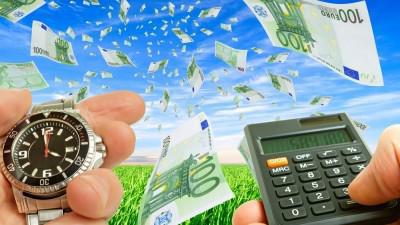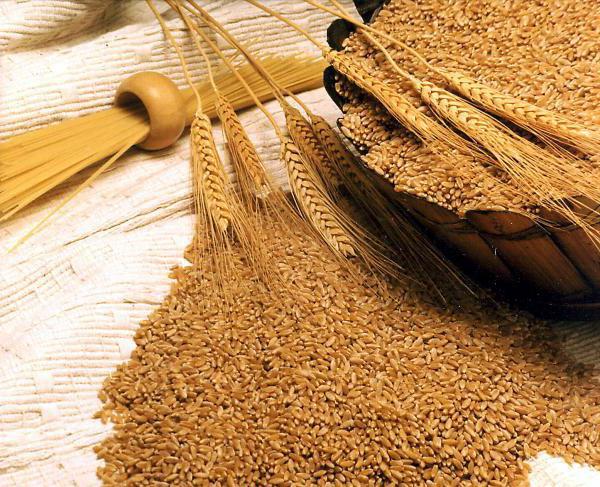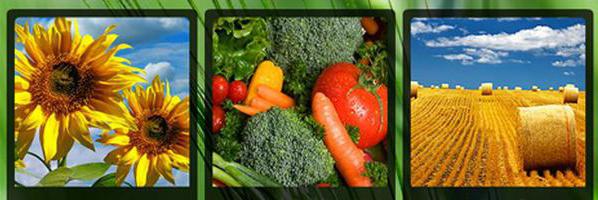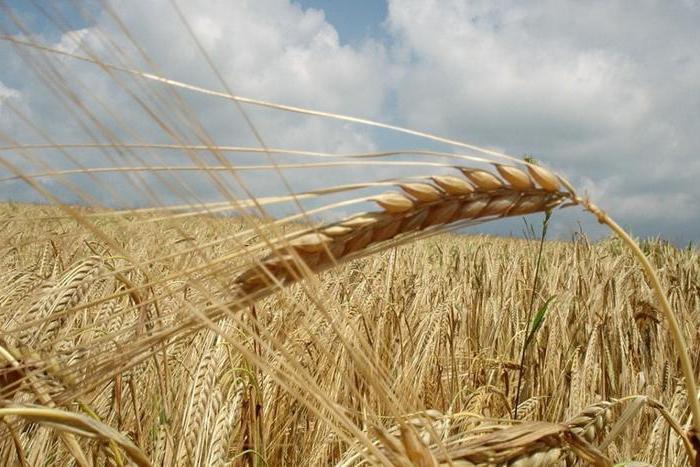The single agricultural tax for agricultural producers replaces the main set of established mandatory budget fees. This system is provided for both physical (IP) and legal entities. 
General information
The current edition of Ch. 26.1 of the Tax Code sets new principles for the taxation system. Currently, it is as close as possible to a simplified scheme. Application of a single agricultural tax by individual entrepreneurs carried out instead of:
- Personal income tax.
- Sales tax.
- Transport fee (in relation to vehicles operated in the course of activities related to entrepreneurship).
- UST.
- Property tax on individuals (in relation to objects used in entrepreneurial activities).
For legal entities, it replaces:
- VAT (excluding VAT, which is payable upon importation of products into the Russian customs territory).
- UST.
- Deductions from the property of the organization.
- Income tax.
Subjects
Single agricultural tax payers must comply with a number of requirements. In particular:
- They must produce agricultural products or grow fish, carry out their industrial and primary processing, as well as sales.
- In the total profit from the sale of such entrepreneurs or organizations, the share of income from the sale of agricultural products or fish should be at least 70%.

Specifics of use
The Unified Agricultural Tax (SAR) was introduced in 2001. It can be used by strictly defined subjects. General concepts and calculation conditions are given in the Tax Code. A special chapter reflects all the basic definitions and rules. In addition, it establishes the procedure for calculating and paying a single agricultural tax. The relevant provisions are given in a special chapter of the law. One of the main features of using the system is the obligation of subjects to keep records of performance indicators. They will be used to calculate the tax base and the amount of a single deduction. One of the requirements is the recognition of expenses and incomes on a cash basis. In accounting, this is carried out in accordance with the certainty of the facts of activity in time. In this regard, the subjects, in order to fulfill the requirements contained in Ch. 26.1 of the Tax Code, should be adjusted indicators in separate registers.
Consumer cooperatives
These enterprises are engaged in marketing, processing and carry out livestock, gardening, horticultural and supplying functions. For them, the share of the sale of agricultural products of their own production by participants in cooperatives, goods released from agricultural raw materials of their own production by members of the association in the total profit should also be at least 70%.
Important point
The requirement to maintain accounting and adjust its indicators applies to legal entities, farms (peasants), and entrepreneurs. However, according to the Federal Law No. 129, the latter are not obliged to do this. According to sub. 2, Art. 4 of the specified law, they should expense and income accounting in the manner prescribed by the Tax Code. In this case, the legislation requires that the indicators used in calculating the tax base be determined in accordance with the information present in the financial statements. 
Revenue recognition
The procedure is similar to that provided for entities using a simplified system. When determining the object of taxation with a single agricultural tax, organizations take into account profits from the sale of products and property rights, non-operating income. The proceeds provided for in Art. 251 of the Code. Individual entrepreneurs should only consider income received from their entrepreneurial activities. The date of receipt is the day on which the funds were received at the cash desk or into an account with a serving banking organization. Moreover, the Code specifically stipulates the recognition of certain types of income when changing the taxation regime by those legal entities that determined the income tax base on an accrual basis.
As of the date on which revenue was recorded, such enterprises should include in the profit the advance amounts for contracts that are expected to be fulfilled during the period of using the special regime. At the same time, such entities are not classified as incomes, according to which the single agricultural tax of the Russian Federation is calculated, some revenues excluded from their composition by law. In particular, they do not include the amounts received during the use of the special regime for products (works / services), the profit from the sale of which is included in the calculation base during the legal entity’s stay in general mode. For individual entrepreneurs, such difficulties do not arise. This is due to the fact that the determination of the income of these entities is carried out on a cash basis before and after the transition to a single agricultural tax has been made.
Costs
In paragraph 2, Art. 346.5 of the Code established their closed list. The expenses indicated in the list are similar to those which are taken into account by entities using a simplified system. However, their list is somewhat larger. The single agricultural tax is calculated taking into account the costs of:
- Litigation and arbitration disputes.
- Staff development.
- Information and advisory services.
- Food workers involved in agricultural activities.

Additionally, expenses in the form of fines and penalties for non-performance or improper performance of obligations under contracts and the amount of compensation for damage caused are also taken into account. All expenses are recognized only after they have been paid. Costs must be economically justified and documented.
Special rules
The costs of acquiring fixed assets and intangible assets are accounted for and recognized in much the same way as in the simplified scheme. For these funds and assets acquired after the transition to a single agricultural tax, expenses are recorded at the time of their commissioning. However, in this way it is not possible to recognize costs in all cases. If the taxpayer implements (transfers) objects acquired during the application of the special regime, before the expiration of three years from the date of their acquisition (and for objects with useful life more than 15 years - before the expiration of 10 years from the date of their acquisition), then it has negative tax consequences. In accordance with paragraph 8 of subparagraph 2 of paragraph 4 of Article 346.5 of the Tax Code of the Russian Federation, the taxpayer must recalculate the tax base for the entire period of use of the sold (transferred) objects, taking into account the provisions of Chapter 25 of the Tax Code of the Russian Federation and pay an additional amount of tax and penalties.
Base
It is income reduced by the amount of expenses. They are determined by cumulative total since the beginning of the period. Expenses / income, which are expressed in foreign currency, are translated at the Central Bank rate set at the time of profit / cost. The monetary expression of income in kind is determined in accordance with the market price (net of VAT) under the provisions of Art. 40 of the Code. If the taxable entity does not do this, the supervisory authorities have the right to recalculate the proceeds themselves.The reduction of the base is carried out exclusively by the amount of loss that was received in previous periods in which the uniform agricultural tax was used. Losses incurred during the settlement of other regimes, including special ones, are not recognized. The single agricultural tax rate is 6%. 
Deadlines
The reporting period under the considered special regime is equal to six months, and the tax one is a calendar year. This provision is established in Art. 346.7 of the Code. At the end of the period, entities are required to calculate the advance amount. This requirement is established in Art. 346.9, p. 1. Advance payments paid during the year will be included in the payment of a single agricultural tax at the end of the period. The Code does not establish a term for transfer. Declaration on USH for six months shall be submitted before July 25 of the current (reporting) year. The reporting deadlines for the results of the period coincide with those established for the transfer of the annual amount. Legal entities pay a single agricultural tax until March 31, and entrepreneurs - until April 30 next year.
The objects
As these are agricultural land that is owned, owned or used by the subject of taxation. When determining objects take into account sales and non-sales income. They do not include the proceeds given in Art. 251, as well as the amount of dividends taxed by the agent. Defining objects, income is reduced by expenses for:
- Production, construction, acquisition of fixed assets, their completion, reconstruction, retrofitting, technical re-equipment and modernization.
- Obtaining intangible assets or creating them by the subject.
- Repair of OS leased including.
- Salary temporary disability benefits according to the legislation of the Russian Federation.
- Compulsory insurance, including contributions for all its types.
- Leased, leasing, including payments for property.
- Voluntary insurance including contributions for cargo insurance and transport.
- On business trips.

The decrease is also carried out by the amount of:
- VAT on purchased and paid products, the costs of which are to be included in expenses in accordance with the provisions of the Code.
- The interest that is paid for the provision of loans, loans.
- Associated with transfers for the services provided by financial institutions, including those related to the sale of foreign currency in the recovery of interest, fees, and fines.
- Customs payments provided for the importation of products into the customs territory of the country and are not refundable.
Accounting Features
Expenses for technical re-equipment, reconstruction, modernization, additional equipment, completion, manufacturing, construction, acquisition of fixed assets and intangible assets are accepted at the time of commissioning. The costs of obtaining property rights to land are recorded evenly over the period established by the subject of taxation, but not less than 7 years. Amounts are accepted in equal shares for the tax and reporting periods. Recognition of expenses and income is carried out on the date of receipt of funds at the cash desk or bank accounts, receipt of property rights or products (works, services), as well as upon repayment of debt by other means.
List specifics
The tax rate is determined from one comparable hectare of agricultural land. The size is calculated in the form of 1/4 of the amount of fees imputed in the previous calendar year when working under the general taxation system. Payment is made at the location of agricultural land no later than the 20th day of the month that follows the past period.
Features of mode change
In order to transfer to the Unified Economic Taxation, the subjects of taxation must submit an appropriate application to the tax authority at their place of location (residence). Inspectors recommend using a standard form.You can apply at a specific time - from October 20 to December 20 of the year that precedes the one from which the subject switches to the new regime. Newly formed legal entities and registered entrepreneurs can accept the system from the date of registration. To do this, an application for transition to the Unified Census is submitted along with documents for state registration. 
Limitations
They relate to the simultaneous use of other special modes. So, the subjects applying the unified social tax cannot change it to the simplified tax system and vice versa. Restrictions are also provided for those enterprises that use UTII for certain types of activity. They can’t switch to the Unified Economic Taxes, but they have the right to use a simplified scheme.
Additionally
The share of sales of agricultural products, which should be 70%, is determined for 8 months. of the year in which the entity submits an application for the use of a single agricultural tax. Subsequently, confirmation of the possibility of making transfers under this regime is necessary. For this, the entity should determine the share of profit from the sale of agricultural products of its production annually at the end of the period. The transition to the payment of unified agricultural tax cannot be carried out by organizations that have representative offices or branches that produce excisable goods. Restrictions apply to budgetary institutions. Organizations that carry out entrepreneurial activities in the field of gambling can not switch to the Unified Social-Economic Commission.








